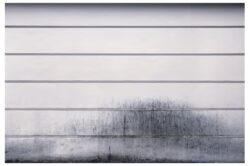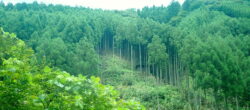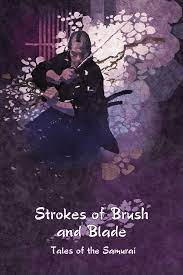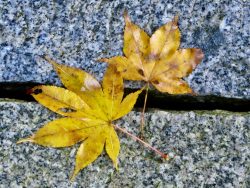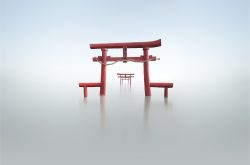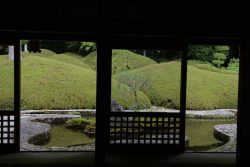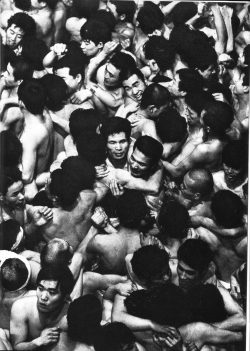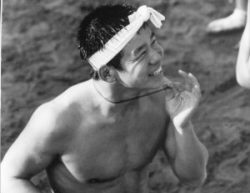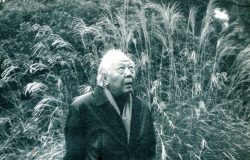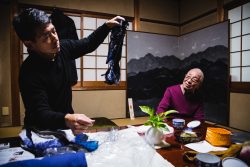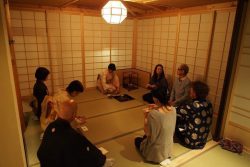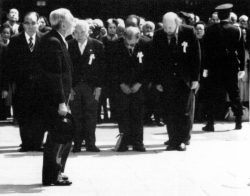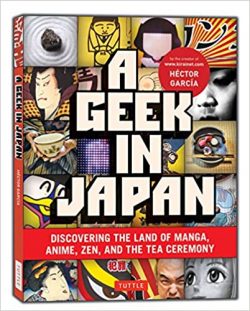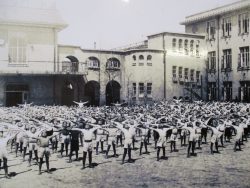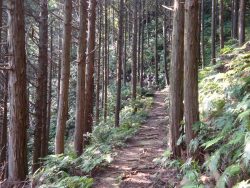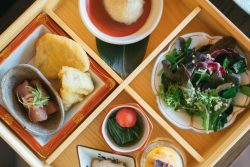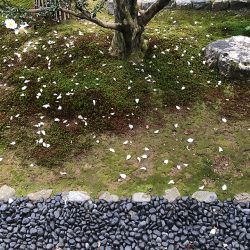Posts Tagged ‘Japan’
White Lines
Horizontal lines on an earthen wall. Found on the outer walls of temples, some shrines, and the Imperial Palace, these lines indicate close historical ties to the Imperial family. Some temples have three or four lines, but the walls of monzeki jiin, where members of the Imperial family have served, are decorated with five.
Throughout the city of Kyoto, these lines are so ubiquitous as to go unnoticed by visitors and residents alike. For me, they have a mysterious beauty. Amidst all the classic scenes of Kyoto, I have found myself photographing these simple walls again and again. They are images which were literally painted by the weather.
Read MoreReminiscing Ryoma
Ryōma was born in 1836 to a family that held the lowest rank in the samurai hierarchy, a title purchased by an ancestor who had made his name as a sake brewer. Despite these humble beginnings, Ryōma went on to become a master swordsman, and in recognition of his skill, his Tosa clan allowed him to continue his training in Edo. It was during his time in the old capital that American Naval Commodore Matthew Perry sailed to Japan to forcibly end the shogunate’s policy of national isolationism.
Read MoreFeeling the trees shivering: endangered environmental knowledge in northern Kyoto
For more than 400 years, villagers in the northern mountains of the Yamashiro basin (an area now incorporated to the modern administrative system of Kyoto city) have developed a special relationship with trees—in particular, with one specific type of tree, the cedar or Cryptomeria japonica, called sugi in Japanese.
Read MoreFinding Her Inner Jewish Soul in Japan
It has been common for several decades for Westerners in Japan to seek enlightenment and spiritual comfort in Buddhism and other Asian religions. It’s a well-traveled road, but Liane Wakabayashi’s path to spirituality in Japan, as depicted in this book, is unique. A native New Yorker and a not-strictly-observant conservative Jew, Liane Grunberg (later Wakabayashi) first came to Japan to cover blockbuster art exhibitions held in department stores for a Conde Nast magazine in 1985 and then again in 1987. She lost her return ticket the second time and ended up staying…
Read MoreA Cut Above
The samurai is iconic to Japanese history. These two titles provide the reader with engaging depictions of an ancient warrior culture. Strokes of Brush and Blade: Tales of the Samurai is a collection of historical short fiction by modern Japanese authors. Forty-seven Samurai: A Tale of Vengeance and Death in Haiku and Letters was written in English by Hiroaki Sato, prolific Japanese author and translator.
Read MoreA Culture of Simplicity
The simplicity of wabi-sabi is best described as the state of grace arrived at by a sober, modest, heartfelt intelligence.
Read MoreSeeking Ma
“There is something magical about a torii gate floating in the middle of a lake or shoreline. Once I got more immersed in the study of Japanese culture and religions I developed a parallel appreciation and respect for the symbolism and cultural importance they have to the Japanese people.”
Read MoreSome Gravel, Some Stones: Nature, Art and Spirit in Japanese Gardens
Stephen Mansfield interviews Marion Poschmann, whose novel set in Japan, The Pine Islands, was winner of the Berlin Prize for Literature and shortlisted for the Man Booker International Prize.
Read MoreTadashi Nakajima: Encountering the God of Darkness
Cradled, we were slowly merging. This I knew, looking up at the dusty stars, losing all feeling in arms, in legs, smelling the hot rice odor which was now mine as well. I, the man I thought I knew, was gone, become a thousand others.
Read MoreSacred Desire Notes on Tamotsu Yato: Photographer
Tamotsu Yato embodied the erotic gaze — he was one of the earliest to do so openly. At the same time the gaze involved much more than simple erotics and it is this, no less, which merits our attention.
Read MoreKato Shuichi on Everything – one of Japan’s Last Renaissance Men
Cultural critic, literary historian, novelist, poet and dramatist, Katō is one of Japan’s major post-war figures.
Read MoreThe Shigeno Family of Dyers: Learning from the Past
The Shigenos’ expertise is Kyo-kanoko shibori (Kyoto’s fawn tie-dye) —a technique named for its characteristic dyed patterns which resemble the white spots on a young deer.
Read MoreJapanese Tea Houses Outside of Japan
A round-up of venues outside Japan that offer tea service and/or tea ceremony experiences.
Read MoreMy Year of Meats: An excerpt
It was Kato, my old boss at the TV production company in Tokyo where I had gotten my first job, strangulating English sound bites into pithy Japanese subtitles. Now, he said, he had a new program and could use my help.
Read MoreMeeting the Emperor Meiji
I wasn’t totally sure I understood. It seemed like a strange thing to say — “Do you want to meet the Emperor Meiji?” I did know the Emperor had been dead since 1912…But this was Japan, where things are not always clear…
Read MoreKJ Spring 2020 Reads: Titles from Tuttle
Our reviews of the latest Japan travel and culture-oriented titles from the Asia specialist, Tuttle Publishing.
Read MoreThe Kyoto City KYOCERA Museum of Art
After three years of much-needed renovation, the large Neoclassical building (with a “Japonesque” roof) located across the street from the Museum of Modern Art Kyoto, next to the Heian Shrine Otori, is re-opening as the Kyoto City KYOCERA Museum of Art on May 7th, 2020.
Read MoreKyoto Time Slip: Reliving Japanese History in 3rd Grade
In apparent contrast to ongoing governmental campaigns to internationalize its citizenry and promote futuristic technologies, Japan’s primary education has long endeavored to prepare students to face present-day challenges by imbuing them with mores and practices from a century or more ago.
Read MoreWalking the Kumano Kodo
The Kumano region was long considered to be one of the most sacred regions in Japan, its three shrines attracting pilgrims so numerous that they were said to resemble a line of ants…
Read MoreFood from beyond the bridge of dreams
Although most people think of the ‘traditional’ Japanese cuisine as having its roots in the kaiseki of the late Muromachi and early Edo (1603-1868) periods, Japan and its way of eating are far older. To find out how and why the Japanese came to ‘eat with their eyes,’ it is necessary to cross a bridge of dreams.
Read MoreInvitations to Stillness: Japanese Gardens as Metaphorical Journeys of Solace
The practice of garden-making in Japan has a long history and over the last 1500 years, there have been many changes in perceptions of what constitutes a garden.
Read More
